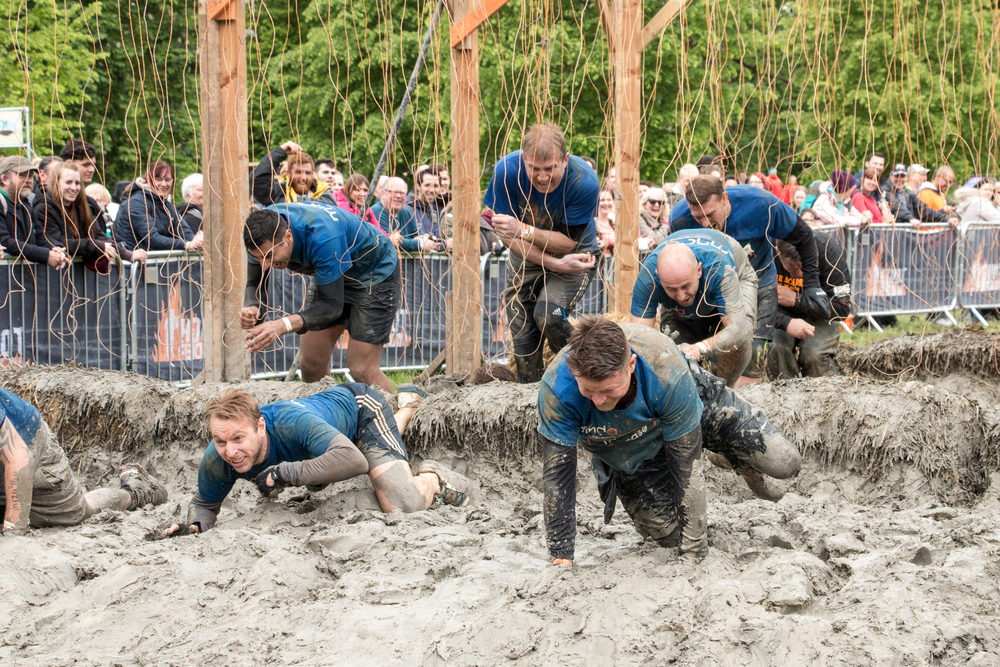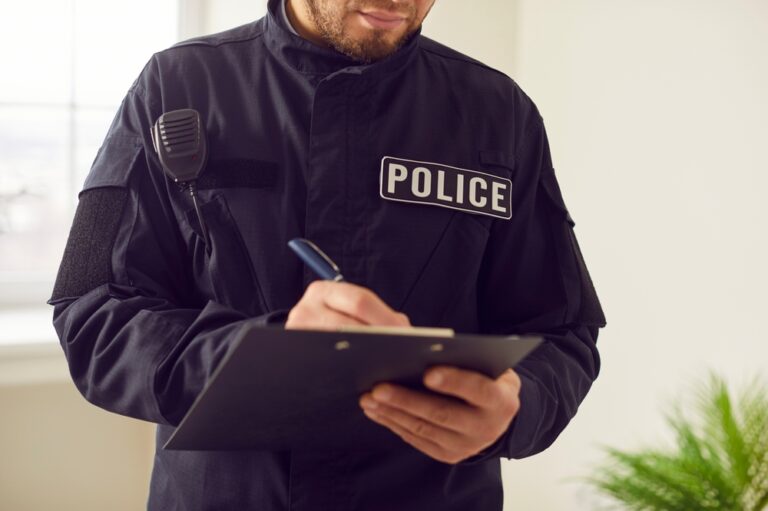
Police Tape 101: Everything You Need to Know
Police tape, commonly known as crime scene tape, is an important tool used by law enforcement to secure…

A career as a police officer is both thrilling and rewarding. It is, nonetheless, one of the most physically challenging occupations.
Police officers are trained to respond to all types of emergencies. As a result, all police functions require a high level of physical condition.
If you want to become a police officer, you are required to take the Physical Abilities Test (PAT) by the United States Capitol Police (USCP).
The PAT’s components require leg, torso, and arm muscular endurance and strength.
High aerobic capacity and muscle mass are linked to good performance on the PAT test.
It’s common to perform better in one test than the other.
To achieve a successful outcome on the PAT, you need a decent level of physical fitness in all areas.
Increasing your cardiovascular health, muscle mass, and endurance are ideal for improving your performance on the PAT test.
Lots of research has gone into determining the levels of fitness required to perform the responsibilities of a USCP Officer.
Based on this research, we have developed some valuable tips for acing the Police Physical Abilities Test pat. The following are 6 tips that can help you ace the PAT test.
You must be more than physically fit, powerful, and willing. You must prepare to perform as if your life’s on the line. Luckily, only your life as a continuing contender is on the line on exam day.
That risk should pique your interest and get you pumped up.
The Pat Test is designed to put your body to the test, test your reflexes, and play on your instincts.
You’ll be graded on your ability to complete specific tasks and assignments. This will show whether or not you’re capable of performing police officer duties. This is a program for physical examinations. Its sole purpose is to cull out those who aren’t up to the task.
Bring your passion, excitement, and expectation of success to this task. You must be physically fit, mentally alert, and ready for battle.
Police departments have utilized two different approaches to measure your physical ability.
The fitness-based approach and the job-simulation approach.
The aspects of a PAT based on either approach are different. However, it is generally a pass or fail test in both circumstances.
To pass the test and progress onto the next phase of the selection procedure, you must meet specific criteria and earn a set number of points on both fronts.
The job simulation approach assesses a candidate’s capacity to deal with real-life scenarios. It means you’ll be put through physical simulations similar to those seen in a police officer’s job, such as sprinting a short distance, hauling a body, going up and downstairs, and overcoming obstacles like windows and walls.
The goal is to check if an applicant can satisfy the physical requirements for becoming a police officer by putting them through physical simulations similar to what they would do on the job.
Some of the everyday actions you will be asked to perform during the job simulation include:
You must practice these actions at your home or other places where you can perform the activities to ace them during the PAT test.
Similarly, you must be in prime shape to pass the fitness-based physical ability test. While the test does not simulate actual police tasks, it does assess a person’s general physical fitness. Some people contend that this is the best technique since it gives information about the candidates’ general fitness and physical abilities, and an indication of their ability to care for themselves.
Each department can choose how many and which aspects to include in their fitness-based PAT. However, the following are the most common ones:
To pass the test, you must complete each activity according to a set of guidelines. Typically, a scale depicts the expected outcomes based on age and gender. A scoring table for each displays how many points you obtained based on your performance..
The best way to get a high score for each fitness-based PAT aspect is by improving on them through regular practice and exercise. It will serve you well during the test.
The “Cooper Standards” are used by the majority of the state, sheriff, and police patrol departments in the United States. The Cooper Institute of Aerobics Research, founded in 1970 and based in Dallas, Texas, created these testing requirements.
If you consider yourself to be physically fit and conduct one-hour cross-training workouts three times a week, you should begin preparing for the police physical ability test four weeks before the test. If you are physically fit but not in a regular exercise routine, you should start training 8-12 weeks before your physical ability test.
Do not attempt to take your physical ability test without first learning what activities will be included. Websites for departments can provide you with a wealth of information. If not, reach out to the concerned departments, and they will help you out.
Do not show up for the test without having a good idea of what to expect! That’s a formula for disaster. Most police departments make the specifics of the physical ability test they utilize, and the required passing scores public.
Once you know what will be on the test and what grade you need to get, put yourself to the test to see how you do and if there are any aspects where you need to improve.
While the tasks on your test may differ, there are certain common occurrences. You can practice all of these exercises to increase your overall fitness, or focus on the aspects relevant to your test.
A running element is included in several departments’ tests. A standard distance is one and a half miles. To clear this test, you must finish it within the allocated time. Some departments have a single deadline to meet, while others have a sliding scale based on gender and age. You can begin by walking a mile and gradually increase to two miles. Progress to brisk walking and then to running/jogging.
Another common feature of the PAT is doing push-ups. During a timed test, some departments need you to accomplish as many push-ups as possible (generally a minute). Others want you to keep doing push-ups until you can’t anymore. You can boost your strength by practicing looping resistance bands in addition to traditional push-ups.
Assessments that require you to do sit-ups are also common during a PAT test. A one-minute timed sit-up test is usually used for this. When training, you can utilize the same resistance band as in the last workout. Crunches get more difficult as the resistance increases, strengthening your core muscles and increasing your overall endurance.
A ratio of weight pressed divided by body weight determines the bench press score. You must achieve a minimum score expressed as a percentage of your body weight to pass. If you’re searching for an alternative to the bench press when you’re on the go, then a chest press is an excellent exercise to try.
The sit and reach put your agility to the test. Sit on the ground with your legs extended and lean forward at the waist, extending to your toes or beyond throughout this test. Your score will be measured in inches. Doing some stretching with a stretch strap will help you prepare for this test.
Here is how you can perform the exercise. Sit in a chair with your legs straight out in front of you. Wrap one end of the loop over your foot and keep the other in your hand. Bring the strap towards you by pressing your foot against the strap.
The height you can spring upward from a standing posture is measured by a vertical jump. Box leaps on a pylobox and other plyometric exercises use the same powerful movements as your vertical leap. Step back down after jumping up atop the box. You can gradually increase your height, aiming for an inch or two every time until you achieve your desired height.
You’ve put in a lot of effort and are in terrific shape. You want to prepare as hard as possible until the final minute. Don’t! It’s advisable to take it easy 48 hours ahead of your physical assessment test and avoid intense exercise. Allow your body to unwind and recuperate. To stay hydrated, get plenty of rest and drink enough water. On the day of your test, eat light and avoid caffeine.
The day of your test finally arrives. You’re pumped and ready to fly through your test. You’ve gotten a decent night’s sleep, eaten a light breakfast, and are well hydrated. You’re clothed in comfortable, strenuous exercise-appropriate attire, and your footwear is rubber-soled and well-fitted. You have mitts and knee pads ready if you’re allowed to wear them and have chosen to do so.
Make sure you leave early as well. Don’t forget to arrive on time for your test!
Take some time to warm up and breathe when you arrive. This helps you relax while also bringing your body up to speed.
Finally, take a moment to concentrate on what you’re about to do. Visualize the suspect you’ll be pursuing. Allow your adrenaline to flow freely. Own the moment… because the finish line—and the start of your career as a police officer—is just around the corner.

Police tape, commonly known as crime scene tape, is an important tool used by law enforcement to secure…

The police are called daily regarding various incidents of public interest. It is our responsibility to provide the…

Many police officers experience terrible, traumatic events in the line of duty. A significant number of police officers…